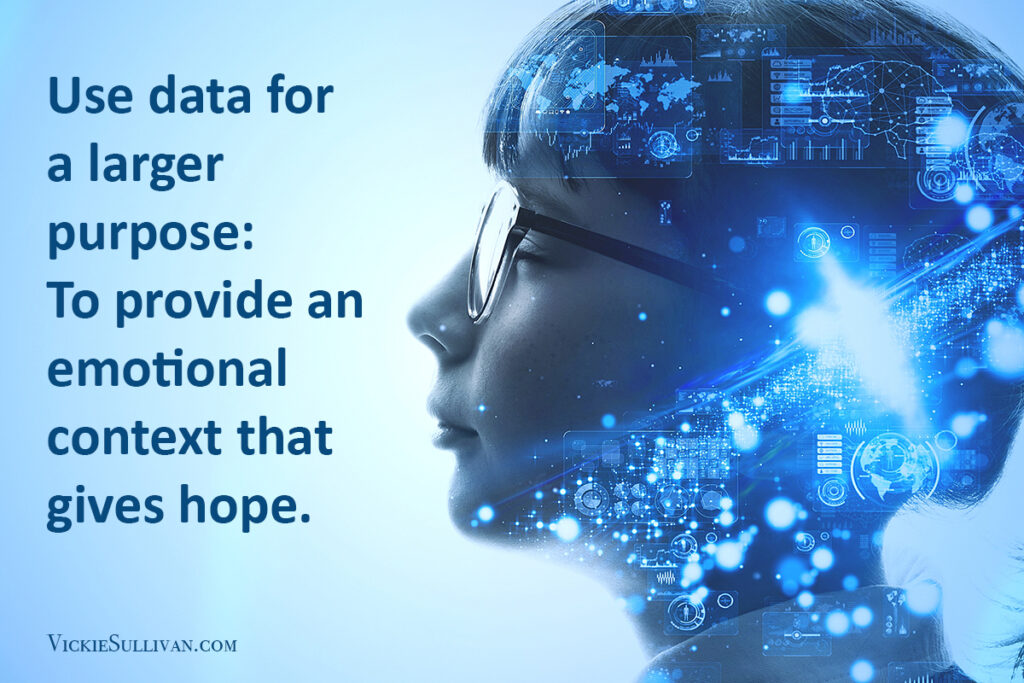Written by: Vickie Sullivan | February 02, 2021
Why You Should Make Your Data Emotional

Can dry number-driven data provide hope? A few weeks ago, I would have said, “Nah.” But after watching “How the United States Can Come Together,” presented by the Harvard Kennedy School of Government, I changed my mind.
The presenters, Robert Putnam and Shaylyn Romney Garrett, authors of Upswing, revealed a new way for thought leaders and speakers to use research to position their insights.
What I liked about their presentation: Putnam and Garrett linked data points with a heavy dose of hope.
How they did it: They began the call by comparing current days with the Gilded Age. They presented a mixture of cultural and economic stats that show multiple factors of decline. (Bummer.)
But then they went for the kill with this twist: The economic data were lagging indicators. They said the culture changed, then the economy changed. They also said we have the power to turn this dire situation around.
This pivot from feelings of despair to hope was quick, succinct, and something thought leaders and speakers can copy.
Listen: 3 Emotional Messages That Come Alive with Data
A lot of us use data to support our recommendations — to prove we are correct. Putnam and Garrett show us, though, that we can use data for a larger purpose: to provide a more emotional context that gives hope. That right there can create a memorable experience that attendees (and clients) will never forget.
Now Read This:
